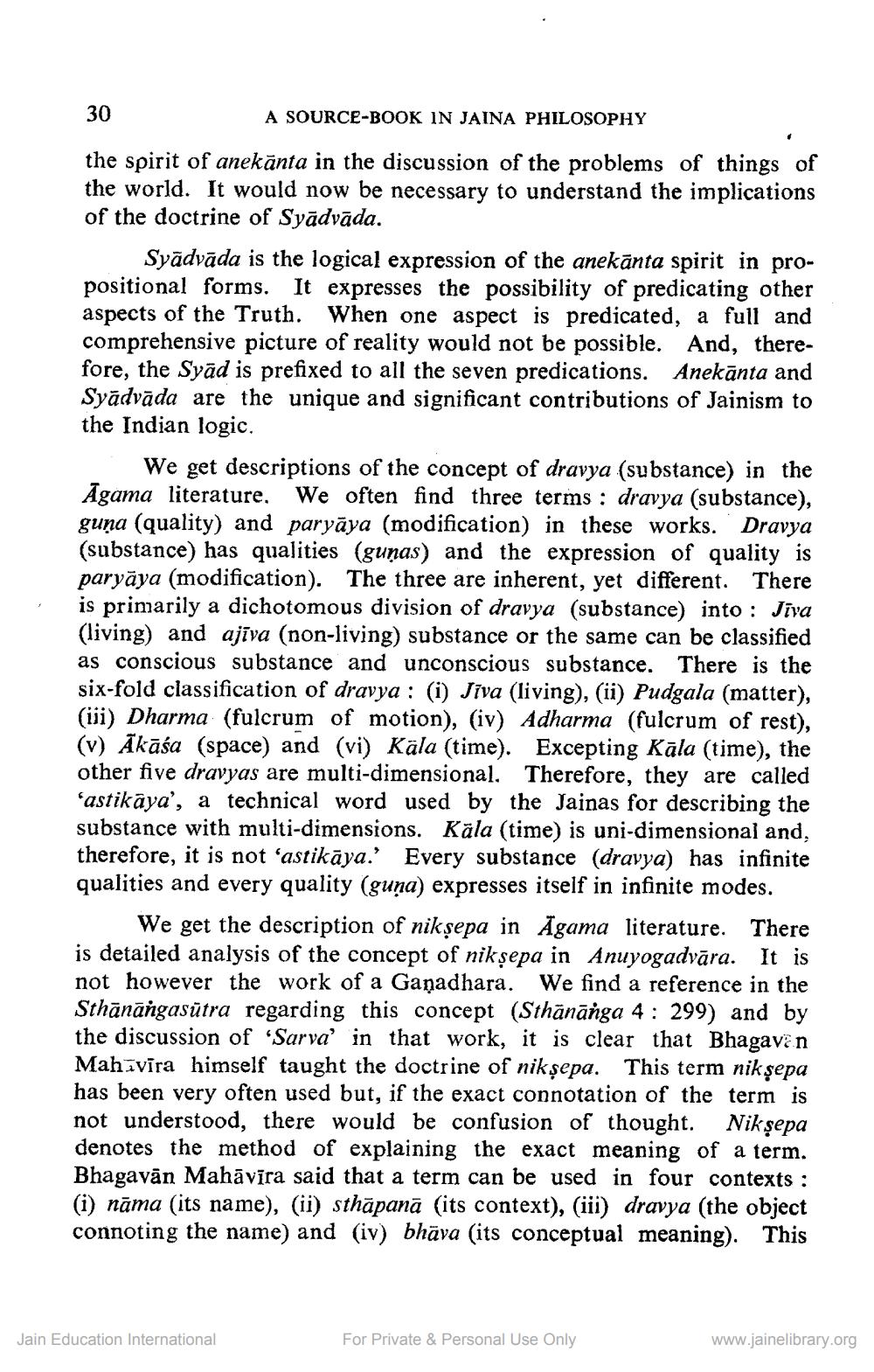________________
30
A SOURCE-BOOK IN JAINA PHILOSOPHY
the spirit of anekānta in the discussion of the problems of things of the world. It would now be necessary to understand the implications of the doctrine of Syādvāda.
Syādvāda is the logical expression of the anekānta spirit in propositional forms. It expresses the possibility of predicating other aspects of the Truth. When one aspect is predicated, a full and comprehensive picture of reality would not be possible. And, therefore, the Syād is prefixed to all the seven predications. Anekānta and Syādvāda are the unique and significant contributions of Jainism to the Indian logic.
We get descriptions of the concept of dravya (substance) in the Agama literature. We often find three terms : dravya (substance), guņa (quality) and paryāya (modification) in these works. Dravya (substance) has qualities (gunas) and the expression of quality is paryāya (modification). The three are inherent, yet differe is primarily a dichotomous division of dravya (substance) into : Jiva (living) and ajīva (non-living) substance or the same can be classified as conscious substance and unconscious substance. There is the six-fold classification of dravya : (i) Jiva (living), (ii) Pudgala (matter), (ii) Dharma (fulcrum of motion), (iv) Adharma (fulcrum of rest), (v) Ākāśa (space) and (vi) Kala (time). Excepting Kāla (time), the other five dravyas are multi-dimensional. Therefore, they are called ‘astikaya', a technical word used by the Jainas for describing the substance with multi-dimensions. Kāla (time) is uni-dimensional and, therefore, it is not 'astikāya.' Every substance (dravya) has infinite qualities and every quality (guna) expresses itself in infinite modes.
We get the description of niksepa in Agama literature. There is detailed analysis of the concept of niksepa in Anuyogadvāra. It is not however the work of a Gañadhara. We find a reference in the Sthānāngasūtra regarding this concept (Sthānānga 4 : 299) and by the discussion of 'Sarva' in that work, it is clear that Bhagavan Mahīvīra himself taught the doctrine of nikșepa. This term nik sepa has been very often used but, if the exact connotation of the term is not understood, there would be confusion of thought. Nikşepa denotes the method of explaining the exact meaning of a term. Bhagavān Mahāvīra said that a term can be used in four contexts : (i) nāma (its name), (ii) sthāpanā (its context), (iii) dravya (the object connoting the name) and (iv) bhāva (its conceptual meaning). This
Jain Education International
For Private & Personal Use Only
www.jainelibrary.org




